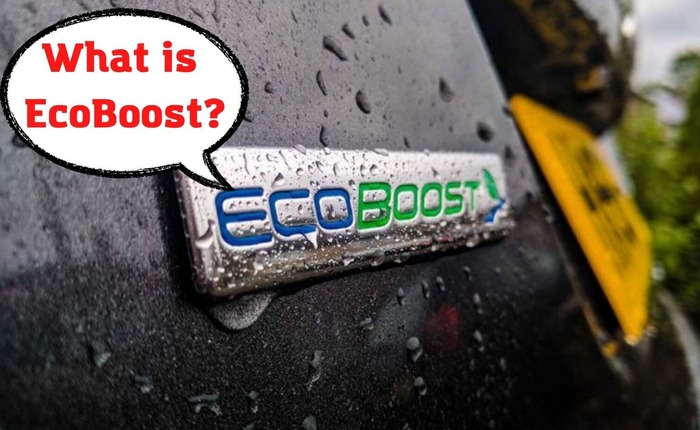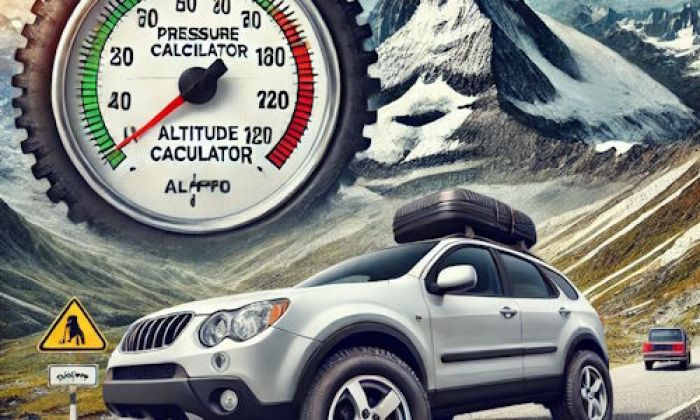
Ford is an expert in building modern engines. The company has presented Ecoboost turbocharging technology more than a decade ago and has been using it in many engines starting with a tiny 1-liter 3-cylinder unit in various versions and up to the big heavy-duty engines for their trucks. When it comes to modern technologies, turbochargers, and fuel-efficient engines, the only thing the buyer wants to know is longevity. How long will the 3.5-liter Ecoboost engine survive? What kinds of problems will it deliver? Today we are going to investigate those questions.
Here are some topics we’ll discuss:
- The life expectancy of a 3.5 Ecoboost engine in different conditions.
- How to prolong the life of a turbocharged Ford engine?
- What are the main problems of the 3.5 Ecoboost and other engines of this series?
- What can kill a turbocharged Ford engine much faster?
Let’s start!
How long will you use the 3.5 Ecoboost engine?
These units are built to last, they are tough motors with wonderful power and insane torque that are primarily designed to be used in trucks and heavy-duty vehicles. This means that their estimated lifetime shouldn’t be less than 250 000 miles or about 400 000 kilometers. Of course, you can make this average mileage shorter or longer by controlling the quality of regular service and maintenance. Once you forget to change the oil in your 3.5 Ecoboost engine on time, you get a shorter life of the unit.
Ford says that the factory standard motors are set to live even longer. Without major modification and with decent maintenance a driver may expect to use the vehicle for 300 000 miles or even 350 000 miles before a major repair is needed. Though many car owners decided to modify their cars somehow and this could bring to worse longevity of the vehicle.
What can reduce the mileage of Ecoboost engines much?
- Larger wheels. Truck owners often install larger wheels to make their trucks look even wilder. These wheels are also good for off-road driving, they provide better grip at rough terrains. But they also multiply the load to your engine making it harder for the unit to rotate.
- Suspension lift. Sometimes the suspension lift is necessary for better off-roading, but you should complete it with the original parts only. Bad modifications of suspension may lead to overloads and may bring the engine death much sooner than you expect.
- Heavy body accessories. Making your truck look nice is a good idea. But if you use a bunch of accessories that weigh some hundred pounds, you aren’t doing a good thing to your engine. The fuel economy will disappoint you and the engine will be loaded all the time.
- Servicing your engine every 15 000 miles. Sometimes truck owners keep servicing their vehicles rarely even after the cars hit high mileage. The best service interval for these engines is 6 to 7 thousand miles. Otherwise, the engine may feel bad after it has achieved the 200 000 miles mark.
- Using high-viscosity oil. This will kill the turbocharger quite fast. You should use the recommended type of oil to service such cars. Even if it’s not the original Ford oil, it should be of the same quality and of the same specs.
- Overloading your car. The more load you put in the trunk or tow with your car, the harder it is for the engine. If you go over the weight limits, you start killing the engine. Better look through the driver’s manual to learn more about maximum payload and towing capacity.
What models have been equipped with the 3.5 Ecoboost engine?
This six-cylinder engine with an efficient turbocharger has been installed on many cars of Ford company. The main models are F-150, Explorer, Expedition, and Flex. Though, the engine is known to be installed on GT, Taurus, and Transit. Also, the 3.5 Ecoboost unit was used for Police Interceptor cars by Ford. Lincoln vehicles have also been using this engine, mainly MKS, MKT, and Navigator.
The company has presented numerous versions of ECUs for the engine, so it may show 350 hp to 647 hp of power. The maximum torque is 630 lb-pi. This is the engine that is ready to be used under any conditions and still be durable and reliable enough. So, let’s keep on looking at its longevity.
What problems have occurred with 3.5 Ecoboost?
The engine can be referred to as one of the most successful modern turbocharged unit. Ford had minor problems with this engine. A decade ago, when the 3.5 Ecoboost units only started to spread in America, a hundred drivers from Ohio tried to sue Ford for some malfunctions of the 3.5-liter engine. But the issue was solved quickly.
And still, the engine has some problems that many drivers and experts say about. We decided to make an ultimate list of troubles to let you know whether you should consider buying a car with such an engine.
Here are some of the most popular problems of the 3.5 Ecoboost engine:
- Timing chain. The timing system operates with a chain. This is a good thing for those who don’t want to pay for a belt change, but the chain has some issues. For example, when the mileage is higher than 100 000 miles, the chain may stretch out a little and change its position. This will lead to inappropriate timing of valves opening and even to major breakdowns of the valve system.
- The turbocharger may sing its last song quite soon. Usually, this happens when you use an inappropriate type of oil. The oil tubes aren’t that wide, so any high-viscosity oil will clog them, at least in winter when the viscosity is even higher. This will lead to poor turbocharger lubrication and to various malfunctions of the unit.
- Intake valves tend to get some carbon build-up quite soon. This depends on the way you use and maintain your engine, but even under optimal conditions the carbon build-up can clog the valves and bring to bad engine operation.
- Spark plugs and ignition coils should be replaced quite often which is strange for such an engine. And if changing a spark plug isn’t a big deal, replacing one of the ignition coils or even the whole pack is a problem. Parts cost a lot for this engine.
- Coolant leaks are common at high mileage. The problem comes from different tubes, connections, plastic elements, and other parts under the hood of your car. The issues with coolant leaks may also bring other problems depending on where the leaking coolant gets after it’s released from the cooling system. If it drops onto some electronic part or a sensor, the problem may double.
In most cases, you can avoid all those problems if you follow the tips on how to maintain and use your engine. But some issues like timing chain problems may still occur suddenly. Usually, all problems start attacking the vehicle owner after the car hits 200 000 miles. Up until that point, everything seems to work fine. If problems come earlier, you should take your car in for a check because it’s possible that the engine needs some sensor replacement or some other minor service. But if the 3.5 Ecoboost engine starts malfunctioning after it has been driven for 300 000 miles and more, get ready to buy a new engine or a new vehicle.
How does the 3.5 Ecoboost tell you it needs service?
The engine is quite good in terms of driving experience. Even if something goes wrong, you won’t necessarily feel it when driving. But it’s extremely important to register any minor malfunctions and changes in the way the engine works. Otherwise, you can just miss the moment when all your problems can be solved for a couple of dollars.
If your engine starts hesitating, stalling, losing its power, rotating longer than usual before starting, and sending some new noise when idling, you should visit the auto repair shop. Also, rough idle and high fuel consumption are signs that something went wrong. If the engine vibrates too much, it means one of the cylinders isn’t working properly. Take the car in for a check and learn why it malfunctions.
If the problem is connected to one of the spark plugs, you are a lucky person. But if it’s about the timing chain, you will have to repair the car as soon as possible. Driving it even one mile further will be a bad decision for your budget.
What to do to drive your 3.5 Ecoboost to 500 000 miles?

Some drivers claim that they have driven over half million miles with their 3.5 Ecoboost engines. This seems like a miracle given today’s engines only live up to 200 000 miles on average. Although these cases of half-million rides are hard to verify, we are ready to believe those guys after investigating the engine and its main specs.
Here are the things you should do with your engine to drive it up to 500 000 miles:
- Only original oil. Changes should be made at least every 7000 miles, the changes should include oil filter and air filter.
- No bad fuel. It’s important to make sure that you buy official fuel that is certified and is of high quality.
- Regular check-ups. You will need to check the timing system every 30 000 miles or more often. Also, sensors, coils, and plugs should be checked regularly.
- Optimal RPMs. Watch out – these engines aren’t fond of driving at high RPMs. If you drive at top speed, the engine gets pure lubrication and wears quickly.
- Optimal loads. Once you start towing more than the producer allows you to, you kill your engine and transmission. Check the payload and towing capacity for your specific model before giving your vehicle a hard time.
- Wheels slipping. If you drive in snow or on ice, make sure you know how to prevent slippage. Otherwise, the engine will quickly gain RPMs once the slippage occurs and will get excessive wear.
- Warming up. You should warm up your engine before pushing the pedal to the metal. One minute of idling after you start your car in the morning is enough. But after that don’t accelerate hard until the engine warms up to its working temperature.
As you see, the instructions aren’t that hard to follow. Just maintain your engine properly and don’t create harsh conditions for the unit. Of course, this is possible in some cases only. If you use your car as a commercial vehicle or a heavy-duty vehicle, the chances are that you won’t care much about the mileage.
Verdict – our final thoughts on the 3.5 Ecoboost engine
We suppose the 3.5 Ecoboost engine is one of the best modern units with a turbocharger. When it comes to turbocharged engines, we always say that they are efficient but have poor longevity. With 3.5 Ecoboost you won’t need to choose between efficiency and longevity. But still, the engine isn’t ideal for all kinds of driving, so it will need some attention from the driver.
The main thing is that these engines love good maintenance and hate when you put some bad oil and cheap filters in them. The average mileage is anywhere between 250 000 and 300 000 miles, but some units are reported to survive even at 500 000 miles. Though if you want to hit that number, you will need to invest your time and money into maintenance and also change your driving habits a bit.
About the authors
The CarAraC research team is composed of seasoned auto mechanics and automotive industry professionals, including individuals with advanced degrees and certifications in their field. Our team members boast prestigious credentials, reflecting their extensive knowledge and skills. These qualifications include: IMI: Institute of the Motor Industry, ASE-Certified Master Automobile Technicians; Coventry University, Graduate of MA in Automotive Journalism; Politecnico di Torino, Italy, MS Automotive Engineering; Ss. Cyril and Methodius University in Skopje, Mechanical University in Skopje; TOC Automotive College; DHA Suffa University, Department of Mechanical Engineering






Add comment